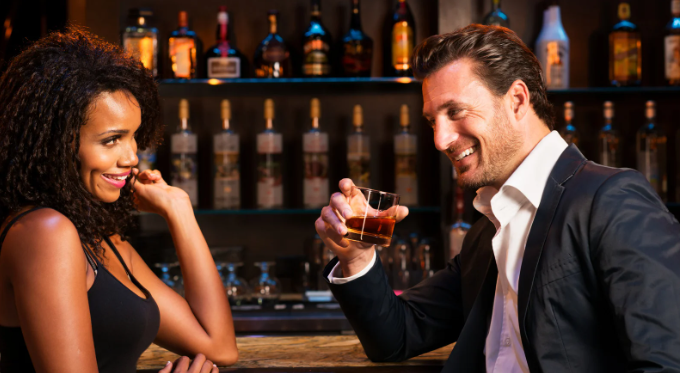What if we paid everyone a basic, bare-minimum livable wage — in exchange for absolutely nothing?
Nothing fancy, mind you; you'd still have to work in order to afford the finer things in life. But enough to cover food, housing, health care, and other essentials without all the frills.
That's the fundamental concept behind universal basic income (UBI), an economic model that's garnered support from all across the political spectrum.
Lose your job? Too overworked to take those higher education courses you wanted? Scared to launch that company you've always wanted to start? UBI would have your back. Instead of worrying about how to make ends meet, everyone — regardless of their income — would have their basic needs taken care of, freeing them up to actually, you know, positively contribute to society in whatever way that they saw fit.
Photo by Stefan Bohrer/Flickr.
It might sound ridiculous. It might seem impossible. But it's happening as we speak.
UBI has already been or is currently being tested in places like Germany, Finland, Namibia, and Canada. And those experiments have all yielded some pretty remarkable evidence in favor of this radical idea.
Contrary to popular assumptions, free money didn't turn people into lazy drunks. Sure, some of them worked a little less — like 5-7% fewer hours on average. But they also invested more time, money, and energy into education and entrepreneurship, and their overall happiness vastly improved.
Photo by Heikki Saukkomaa/Getty Images.
But most of these experiments only lasted for a couple of years at best. No one's ever tracked the long-term impact of UBI ... until now.
The nonprofit GiveDirectly just announced a comprehensive plan to study the effects of UBI through a decade-plus social experiment.
"We’ve spent much of the past decade delivering cash transfers to the extremely poor through GiveDirectly, but have never structured the transfers exactly this way: universal, long-term, and sufficient to meet basic needs," GiveDirectly Chairman Michael Faye and Director Paul Niehaus wrote in an article for Slate. "And that’s the point — nobody has and we think now is the time to try."
If all goes according to plan, GiveDirectly will provide 6,000 people in a Kenyan village with a universal basic income for the next 10-15 years. The exact number all depends on how much money they can raise.
Photo by Tony Karumba/Stringer/Getty Images.
Why Kenya? Because most Kenyans already live on the equivalent of less than $1 a day.
As such, GiveDirectly expects the total project costs to run around $30 million, less than 10% of which will go to general administrative costs.
Nothing fancy here. Just the bare minimum that someone would need to live.
A similar initiative in a developed country would cost more than a billion dollars. And unfortunately, that's not a practical price to pay for an experimental program — even one that, if successful, could improve living conditions for everyone across the board.
Photo by Tony Karumba/Stringer/Getty Images.
But that question of cost does tend to pop up pretty quickly in conversations around UBI.
It's why some people are skeptical about the idea from the start. It's probably why no one's attempted such a grandiose plan as GiveDirectly until now. And that's exactly why their mission is so significant.
For now, GiveDirectly is soliciting donations to provide these 6,000 Kenyans with their salaries. Other economists have suggested funding UBI through standard taxes, the same way we fund our current social programs; others have pointed out that the potential income from untaxed loopholes for the wealthy would be more than enough to cover the cost.
Photo by Tony Karumba/Stringer/Getty Images.
The truth is, there are some things that we just can't know until we try — and that's why GiveDirectly's new initiative is so exciting.
The theoretical evidence all looks to be in favor of a universal basic income, but there are still some things that can't be solved on paper until they're put into action.
Worst-case scenario? GiveDirectly improves the lives of 6,000 Kenyans for a while. Best case? In 15-20 years, someone could be paying you to live as well.






 Schools Out Fun GIF by Pen Pals
Schools Out Fun GIF by Pen Pals  Class in session
Class in session  Season 3 Running GIF by The Simpsons
Season 3 Running GIF by The Simpsons  A dad playing soccer with his child.via
A dad playing soccer with his child.via A couple holding up the Swedish flag.via
A couple holding up the Swedish flag.via A Swedish dad reading a note. via
A Swedish dad reading a note. via Judging technique can come later. Way later. For now, just let kids create. Photo by
Judging technique can come later. Way later. For now, just let kids create. Photo by  A man hitting on a beautiful woman. via
A man hitting on a beautiful woman. via  A woman weighing herself. via
A woman weighing herself. via  A woman with curly hair. via
A woman with curly hair. via  When your kids grow up and move out, it's like you've won: That's when the happiness really kicks in. Photo by
When your kids grow up and move out, it's like you've won: That's when the happiness really kicks in. Photo by  Parents struggle to make enough money while devoting time to caring for and enjoying their kids. Photo by
Parents struggle to make enough money while devoting time to caring for and enjoying their kids. Photo by  Parents in Spain, Norway, Sweden, Portugal, and more are enjoying more time off to spend with family. Photo by
Parents in Spain, Norway, Sweden, Portugal, and more are enjoying more time off to spend with family. Photo by